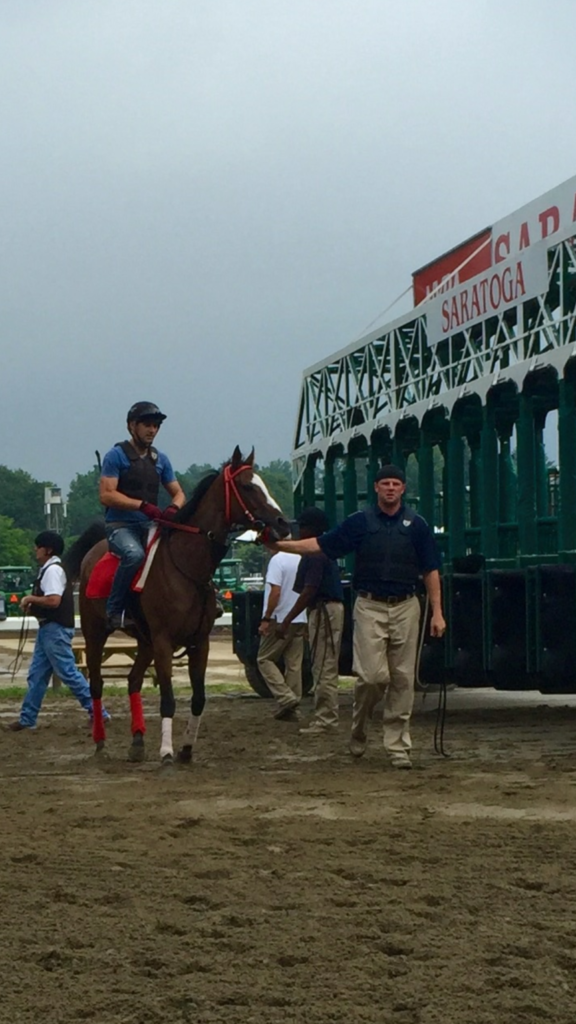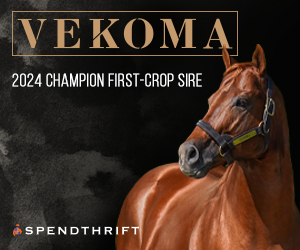
For centuries the claiming race has been the backbone of thoroughbred racing. Making up the bulk of the overall races but far less than that in percentage of purses awarded, the typical claiming race possesses neither the glamor nor drama that a stakes race does. Claiming races are rarely discussed by the general public but for the everyday horse player they make up the bulk of the action.
The claiming race is in fact an ingenious invention and a model of self-regulation. It elegantly serves both the need for competitive races for bettors and the need of horsemen to find opportunities to earn purse money. As most horse players know, the claiming race allows an owner to place a horse in a weak field to earn purse money but it comes with a concurrent risk. A horse in a claiming race is irrevocably offered for sale at the price declared by the connections when entering. It is the definition of “putting your money where your mouth is”. If you “claim” your horse is only worth $20,000 and therefore should be running against other horses worth $20,000 you must be willing to allow someone else to buy the horse at that price. There are no constraints on the price you can “claim” your horse is worth but you must live with the consequences.
As one can imagine, this regime provides much intrigue as each horse’s connections vie to have their horse entered in the easiest field to beat while at the same time protecting the intrinsic value of the animal. In general it provides naturally selected well matched fields that bettors find desirable. It also provides an entry or exit avenue for owners to move into and out of ownership.
For most of racing’s history the claiming race was a prime example of caveat emptor the Latin phrase meaning buyer beware. It was also a strictly “as is” affair. Once the gates opened for a claiming race the claimed horse belonged to the new owner for all but winnings in that race. The consequence of an injury or death in the race was borne entirely by the new owner who committed to buy the horse at the designated price prior to the race.
This added an extra level of risk to the new purchaser who had to determine both that the horse in question was worth the designated price prior to the race and after it. It also led to gruesome instances where horses suffered catastrophic injury in the race and the new owner was left with the solemn duty of disposing of the remains.
It is not hard to imagine the temptation that is present to offer a horse with a problem at an attractive price to salvage value for an animal who has limited or no future racing ability. Many times a claiming race is a legitimate exit strategy for owners who believe a horse has peaked in ability and/or conditioning or one which no longer serves the owner’s goals or needs. However racing history is replete with instances where a new owner takes a claiming horse who has an existing or brewing problem and finds the animal is no longer capable of racing or duplicating its form going forward. To be clear racing is strenuous and sometimes horses injure themselves in the running of the race but in many instances where a horse is suffering from a physical problem the new owner/trainer suspect the former owner/trainer knew about it and used the claiming race merely as an exit vehicle.
With animal welfare gaining far greater emphasis and in fact becoming an existential threat to the sport, certain racing jurisdictions have deviated from the historical and traditional claiming rule whereby the claimed horse is purely at the new owner’s risk. This takes away much of the incentive of an owner or trainer to enter a horse that is injured in a claiming race. Most notably California and New York have added claiming rules whereby a claim of a horse is voided in certain instances and voidable at the option of the new owner in certain other instances.
Both the new California and New York claiming rules make it clear that a claim of a horse that suffers a fatality in or from injury in the race before leaving the racetrack is void. New York further makes the claim voidable at the option of the new owner if the horse requires the assistance of the equine ambulance to leave the track. This option must be exercised by the new owner within an hour of the race becoming official. This option of the new owner to stand by the claim is an acknowledgment that there are times when a horse is claimed with the intention of retiring or breeding the horse and in those instances the new owner may wish to continue with the purchase of the horse notwithstanding its need of an ambulance to leave the racetrack.
PROPOSED NEW RULE The focus of this article is to urge modification to the New York claiming rule to substitute being “placed on the veterinarians list” for “needing an ambulance to leave the track” as the determining event to make a claim voidable.
CONSIDERATIONS:
As the attached letter to the New York State Gaming Commission outlines, the more determinative question of a horse’s condition is whether or not it has been placed on the track’s “vet’s list” which is a list of horses which must work to the satisfaction of the applicable veterinarian in charge before being entered to race again. Being placed on the vet’s list is a concrete action with concrete consequences. Many horses on the vet’s list have minor treatable problems and once corrected go on to have nice or useful careers, but it is an indication that the horse has enough of a problem to be prevented from being entered in races until the track’s veterinarian is convinced the horse is sound enough to run. It is not unusual for a horse to come out of a race in which it was claimed and be placed immediately on the vet’s list. This may or may not be an instance where an equine ambulance is required. This has immediate consequences to the new owner – even if an equine ambulance is not required – and should be the determinative factor in whether a claim is voidable. The ONLY matter the ambulance crew and rider should be concerned with is the needs of the animal. They should not be burdened with the consequences of a voidable claim hanging over their heads when determining whether the animal needs the equine ambulance. New York is to be commended for its efforts to lessen the incentive to a horse’s connections to run a compromised horse in a claiming race as an exit strategy but it is a rule which should be further modified to assure the goal of the rule is met and that an animal in need receives an ambulance ride if it needs it without further consequence.
William G. Gotimer, Jr.
Attorney-at-Law
444 North Village Avenue
Rockville Centre, NY 11570
(516) 763-1260
September 23, 2016
Robert Williams
Executive Director
New York State Gaming Commission
PO Box 7500
Schenectady, New York 12301-7500
Ronald Ochrym
Director of the Division of Horse Racing
New York State Gaming Commission
PO Box 7500
Schenectady, New York 12301-7500
Re: Rule 4038.5(a)(3) Voidable Claims
Dear Sirs;
I write this letter as a thoroughbred owner in the State of New York and as an attorney on behalf of numerous of my clients who also own and race thoroughbreds in New York State. We write to urge a modification of Rule 4038.5(a)(3) pertaining to voidable claims.
While we are generally in favor of the rule as being beneficial to the overall sport of racing and protective of its human and equine athletes, we believe a modification is required to allow the rule to better serve its purpose. As written, the defining determination of whether the rule is applicable is the vanning of the horse off the racetrack. While the voidable claim rule clearly should apply to such instances, in our opinion requiring a van to leave the racetrack is not the proper defining action.
Each horse that requires van assistance to leave the track and return to the barn area is placed on the applicable racetrack’s “veterinarian’s list” and must thereafter have its soundness and fitness to race proven to the veterinarian before it may again be entered to race. However, there are numerous horses who do not need van assistance to leave the racetrack but nevertheless show signs of injury or fatigue that result in them be placed on the same vet list with the same restrictions on their future ability to be entered.
In the past two weeks at Belmont Racetrack the identical circumstances lead to two different outcomes based upon whether the horse van was used to assist the horse. Chomsky was eased yet walked off and the claim could not be voided yet a horse named Captain Serious eased and was placed in the van and his claim was voided. Both horses are on the veterinarian’s list.
We therefore advocate that Rule 4038.5(a)(3) be modified to make it applicable if a horse is “vanned off and/or placed on the applicable racetrack’s veterinarian’s list”. This would bring the rule into accord with the current rule in the State of California and better accomplish its goal of removing the incentive to endanger horse’s health.
We note that the current rule has the unintended consequence of having a significant monetary impact on two separate thoroughbred owners determined by whether a racehorse that is struggling gets the assistance of a van. This places tension on the decision of whether to van a horse off the track. While the veterinarians at the various racetracks are professionally dedicated to protecting ONLY the welfare of the horse when it comes to ordering a van, the rule puts them in a difficult position in borderline cases. It also gives the appearance of impropriety to outside observers. A rule that is wisely implemented to protect thoroughbreds may in fact at times lead to fewer struggling athletes being able to receive van assistance.
Our suggested change is a refinement of the rule to assist the track veterinarians and make it clear that New York State will not permit the claiming race structure to be a method by which thoroughbreds with a physical problem are sold off to other owners. We believe this suggested change has the support of most of the racetracks in New York State as well as the majority of horsemen and horsewomen who have the best interest of the equine and human athletes at heart and urge you to act on this matter. If helpful we would be happy to discuss this further with you or other necessary parties.
Sincerely,
William G. Gotimer, Jr.



